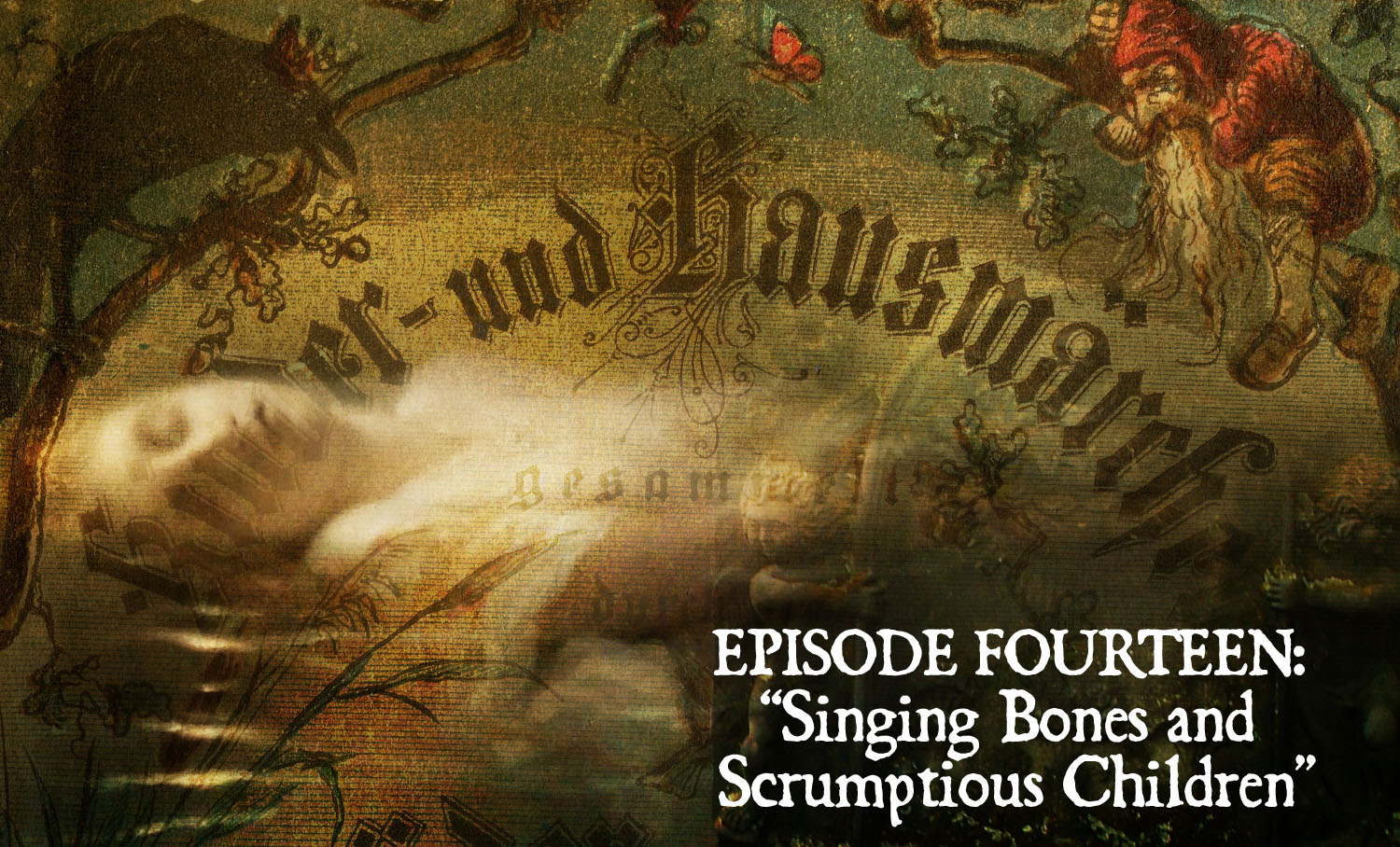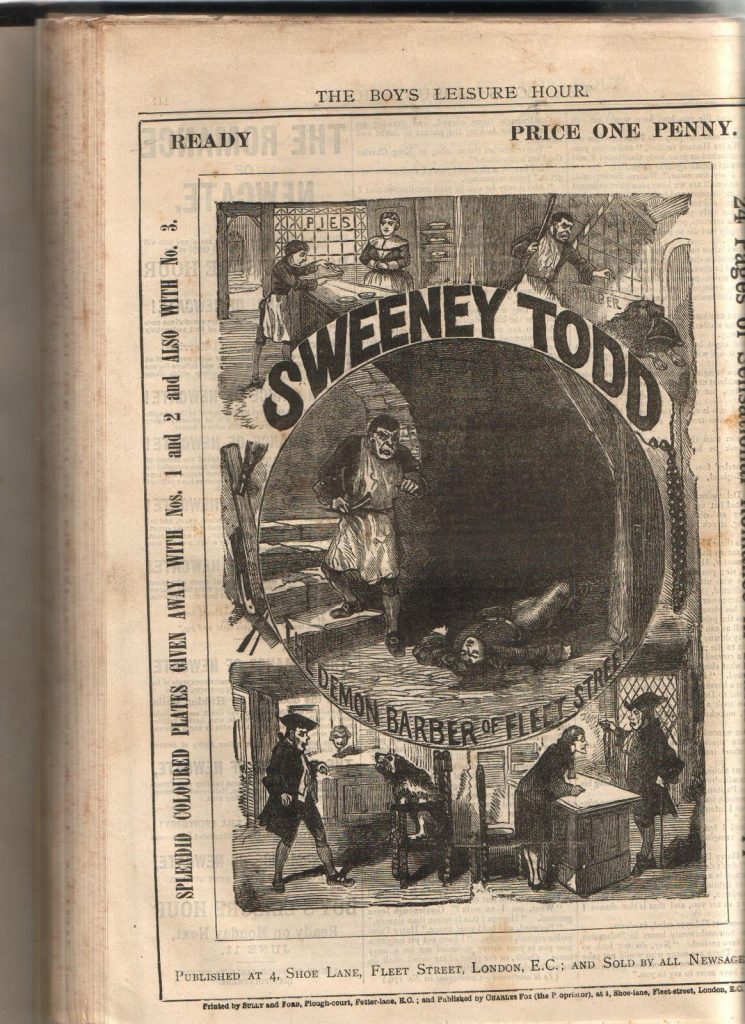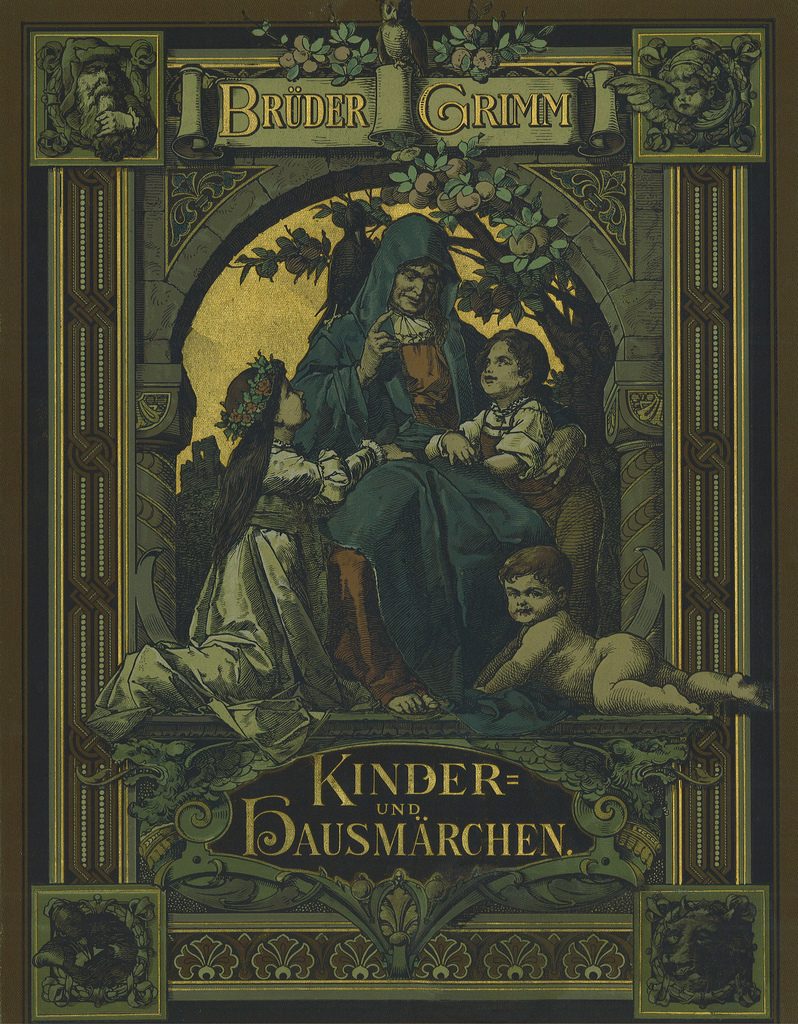
#14 Singing Bones & Scrumptious Children
Podcast: Play in new window | Download (Duration: 38:46 — 71.0MB)
Subscribe: Apple Podcasts | Spotify | Android | Podchaser | RSS | More
This episode looks at some particularly gruesome fairy tales and folk ballads telling of murderers convicted of their crime through magical intervention of the bones or blood of their victims.
We begin with a look at the story of Sweeney Todd the Demon Barber of Fleet Street as it shares a common theme of accidental cannibalism with Grimm fairy tale central to our episode, “The Juniper Tree.” Some Victorian urban legends are identified as possible sources of the story, which first appeared in an 1846 penny dreadful entitled The String of Pearls, a Romance. We also hear a snippet of a song about the Demon Barber written by R.P. Weston and sung by English music hall revivalist Stan Holloway, the artists who also gave us the song about Anne Boleyn’s ghost “With Her Head Tucked Underneath Her Arm,” featured in our “Lost Heads” episode.
 We then have a look at “The Juniper Tree” published in 1812 in the original edition of Grimm’s collection Children’s and Household Tales, that is, what we call Grimm’s Fairy Tales. The grisly tale would never lend itself to the Disney treatment, though it did serve, extremely loosely, as inspiration for an Icelandic film of the same name, starring a young Björk.
We then have a look at “The Juniper Tree” published in 1812 in the original edition of Grimm’s collection Children’s and Household Tales, that is, what we call Grimm’s Fairy Tales. The grisly tale would never lend itself to the Disney treatment, though it did serve, extremely loosely, as inspiration for an Icelandic film of the same name, starring a young Björk.

“The Juniper Tree” tells of an evil stepmother who contrives to kill her stepson in a particularly brutal way, covering her crime by cooking the child’s remains into stew served to the family. The tale also includes of blood, a vengeful bird, and a fiery, magic juniper tree. English, Austrian, and Romanian version of the tale, are also noted for noteworthy bits of horror, and we hear a a musical rendition by the Russian ensemble Caprice of the song sung by the bird in this Grimm story.

The next story, introduced via an audio oddity from the 1962 film, The Wonder World of the Brothers Grimm, is “The Singing Bone.” Like “The Juniper Tree,” this one revolves around the outing of a murderer though a song. In this case, the song telling the tale of murder of one brother by another produced by a flute made of a bone of the murdered brother. We also have a look at a number of variations on this tale and a tool used by folklorists,The Aarne–Thompson Tale Type registry, where one can find synopses of tales listed the “Singing Bone” (#780) category, such as:
“780B: The Speaking Hair: A stepmother buries a girl alive. Her hair grows as wheat or bush and sings her misfortunes. Thus she is discovered and dug up alive. The stepmother is buried in the same hole.”
Just as bones communicate the identity of their murderer, the blood of a victim in other tales can bring a killer to justice. We hear a number of tales of this sort, including the Icelandic “Murder Will Out,” featuring a bleeding skull impaled with knitting needles.
The idea that human remains could identify their killer was not just the stuff of folk tales. The idea that a corpse would bleed in the presence of its murderer (called ‘cruentation’ from a Latin word for “staining with blood”)was, in past centuries, an accepted element of criminal law in Germany, Denmark, Bohemia, Poland, and Scotland, and even the United States. We hear a snippet from Shakespeare’s Richard III, featuring the practice as well as an example of cruentation used as late as the early 1800s in the US.
The “Singing Bone” story has parallels in the world of folk music. The murder ballad “Two Sisters” (also “Twa Sisters,” “The Cruel Sister,” “Binnorie,” or in America, “The Dreadful Wind and Rain”) tells of the murder of one sister by another over an issue of romantic jealousy. Like “The Singing Bone,” the victim’s bones are found and made into a musical instrument that produces a song convicting the murderer. Often the hair, or in an older version dating to the 1600s — veins, are turned into the strings of a harp. We hear a version of the song by The Askew Sisters and by the German group Broom Bezzums, and American versions by Kilby Snow and Tom Waits, also a rather different take on the song from Sweden, where more than a hundred versions also exist.
We saved a final tasty morsel for the end of the show, a surprising historical account, which precisely parallels the Sweeney Todd story, not from 19th-century London, but a place and time far, far removed.